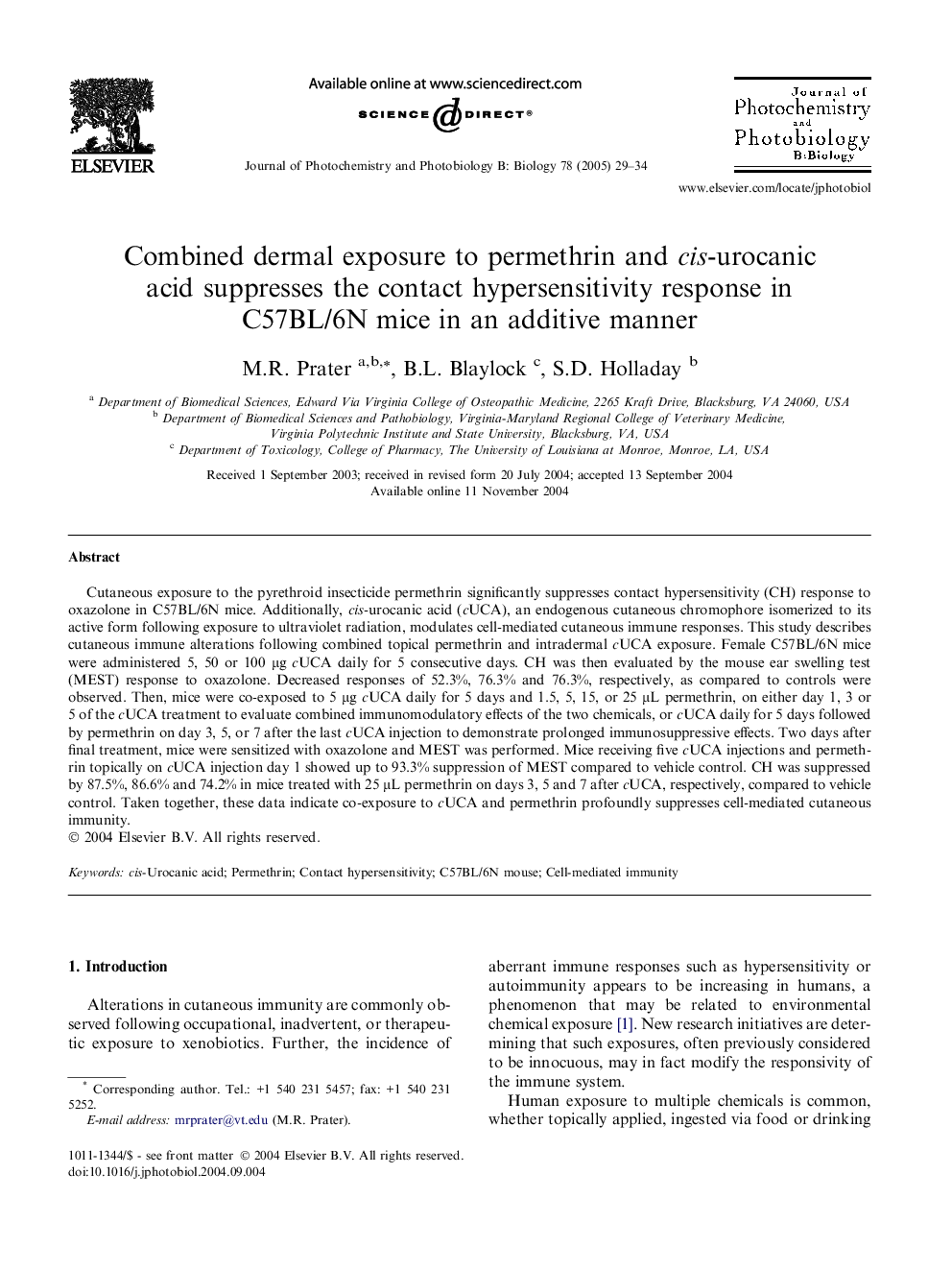| Article ID | Journal | Published Year | Pages | File Type |
|---|---|---|---|---|
| 9607106 | Journal of Photochemistry and Photobiology B: Biology | 2005 | 6 Pages |
Abstract
Cutaneous exposure to the pyrethroid insecticide permethrin significantly suppresses contact hypersensitivity (CH) response to oxazolone in C57BL/6N mice. Additionally, cis-urocanic acid (cUCA), an endogenous cutaneous chromophore isomerized to its active form following exposure to ultraviolet radiation, modulates cell-mediated cutaneous immune responses. This study describes cutaneous immune alterations following combined topical permethrin and intradermal cUCA exposure. Female C57BL/6N mice were administered 5, 50 or 100 μg cUCA daily for 5 consecutive days. CH was then evaluated by the mouse ear swelling test (MEST) response to oxazolone. Decreased responses of 52.3%, 76.3% and 76.3%, respectively, as compared to controls were observed. Then, mice were co-exposed to 5 μg cUCA daily for 5 days and 1.5, 5, 15, or 25 μL permethrin, on either day 1, 3 or 5 of the cUCA treatment to evaluate combined immunomodulatory effects of the two chemicals, or cUCA daily for 5 days followed by permethrin on day 3, 5, or 7 after the last cUCA injection to demonstrate prolonged immunosuppressive effects. Two days after final treatment, mice were sensitized with oxazolone and MEST was performed. Mice receiving five cUCA injections and permethrin topically on cUCA injection day 1 showed up to 93.3% suppression of MEST compared to vehicle control. CH was suppressed by 87.5%, 86.6% and 74.2% in mice treated with 25 μL permethrin on days 3, 5 and 7 after cUCA, respectively, compared to vehicle control. Taken together, these data indicate co-exposure to cUCA and permethrin profoundly suppresses cell-mediated cutaneous immunity.
Related Topics
Physical Sciences and Engineering
Chemical Engineering
Bioengineering
Authors
M.R. Prater, B.L. Blaylock, S.D. Holladay,
